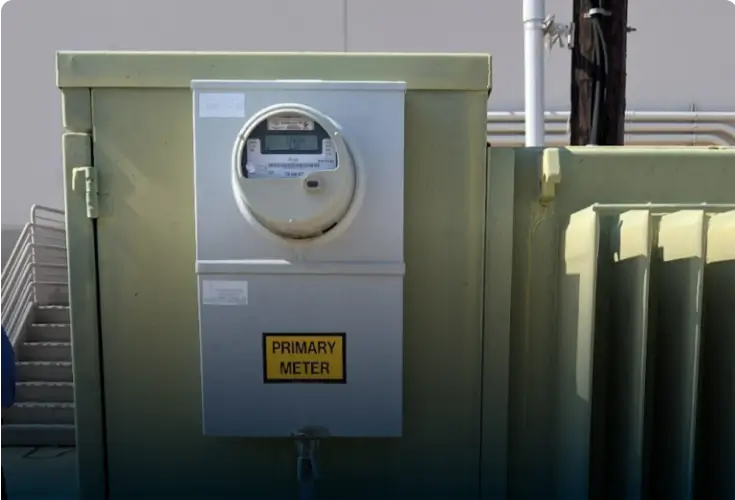Collectively, owners miss their capital budget projections by over $12 billion annually.
A significant reason for this is the lack of visibility into operations and maintenance in triple net leased assets.
As the cost of capital increases and the focus on decarbonization intensifies, firms that can better forecast will find a significant competitive advantage.
Pitfalls to Avoid
A common way to allocate responsibility for HVAC management is to have tenants pay for maintenance and repairs, while the landlord pays for replacement.
That gives tenants, especially those nearing the end of their lease, an incentive to do only the bare minimum to avoid equipment failing due to negligence.
The strategy most often employed to correct for this is to require tenants to have contracts with approved HVAC service companies, and assume the work is being done.
The common challenge is keeping track of compliance with these policies.
Even for infrastructure, such as roofs (or shadow metering), that are wholly the responsibility of the landlord, keeping track of projects in spreadsheets turns out to be a nightmare.
As the portfolio grows, the number of condition assessments, budgets, and forecasts piles up. Each budgeting season becomes a little longer and more difficult.
A Better Solution
There are a number of tactics that can help to transform the risk and pain associated with capital planning into a competitive advantage.
They can be deployed individually, although each course of action builds on the last, creating exponential value compared to each one individually.
Digitization & Inventory
Thanks to improvements in mobile survey applications, asset inventories can be digitized in a couple of hours per site.
This inventory serves as the foundation for everything else, so it’s a crucial first step.
Work Orders
Whether equipment is the responsibility of tenants, outside vendors, or even in-house property teams, it’s critical to know that the right work is being completed at the right time.
Instead of just stipulating that tenants must hire a qualified third party HVAC contractor, software can both stipulate best practice maintenance checklists and verify the work is being performed.
All of this can tie in neatly to the tenant engagement around ESG. If tenants do have to submit a ticket to the property team, they can do so through the same tenant portal that provides their real-time consumption data, utility bills and alerts.
Capital Planning
If the previous steps have been implemented, there is now a full equipment and infrastructure inventory, along with up-to-date conditions of each asset.
This data flows into capital planning software, which replaces the spreadsheets budgets and allows for documentation to be attached directly to a project.
These budgets are rolled up to the portfolio level, allowing for bulk purchases, better prioritization and a clear understanding of capital requirements year over year.
This could even be applied for the shadow metering outlined earlier.

Equipment Monitoring
Even the best maintenance programs cannot catch everything. In fact, 82% of equipment failures occur at random, meaning preventative maintenance can only prevent 18% of repairs/replacements.
To account for this, real-time monitoring can be deployed to track HVAC units. When issues are detected, alerts are automatically sent to the tenant and vendors responsible for equipment.
Implementing corrective actions early in a failure often makes the difference in whether an early replacement is required.
Benefits
The benefits of digitized operations & maintenance and capital planning flow to both tenants and landlords.
For tenants, having their vendors be able to access an existing inventory, see maintenance histories and follow best practices helps keep operating expenses down.
For landlords, better maintenance translates to lower capital requirements and better forecasting and budgeting.
Perhaps more exciting, it saves a lot of time during due diligence at disposition and can even be a factor in increasing the price of the property (by lowering unexpected CapEx risk).
Conclusion
The boom times in industrial real estate are slowing down.
And while few expect a decline, the growth over the past few years have encouraged new market entrants and greater competition.
Combine that with rising operating costs for tenants and capital costs for landlords, a new set of expectations around ESG, and regulatory reporting, and it’s clear that times have changed.
While change always brings some uncertainty, it is always relieving to know that peers are solving for the same problems and in many cases have settled on a solution.
The key is to learn from them, avoid their mistakes, and use their lessons to maintain a competitive edge.
CASE STUDY
Top 10 Global Asset Management Firm deploys Enertiv to get 100% utility data coverage across 100+ industrial sites
Light at the end of the tunnel
If you’ve made it this far, you’ve likely realized that implementing a utility data collection system in-house involves much more than installing meters and connecting APIs.
Yes, it’s possible to build it from scratch.
But it takes time, resources, and a learning curve that’s hard to fully anticipate.
Unless this is your core business, you’ll likely spend years learning lessons we’ve already paid for — through failed installs, messy integrations, and countless conversations with teams with real-world demands.
What may seem like a straightforward checklist today was, for us, a long path marked by challenges and meaningful breakthroughs.
Today’s sustainability leadership depends on speed and data precision. If you’re serious about hitting decarbonization targets, every delay in collecting accurate utility data is a missed opportunity.
That’s why going through this entire build process internally can actively slow your energy transition.
You don’t need to start from zero to reach net zero. You just need to avoid the mistakes that stall everyone else.





%20consider.webp)
